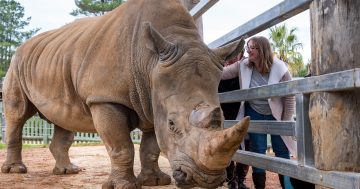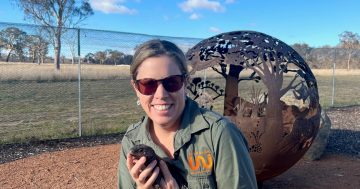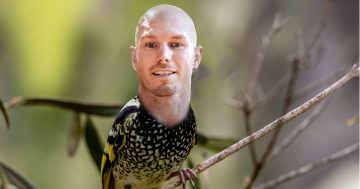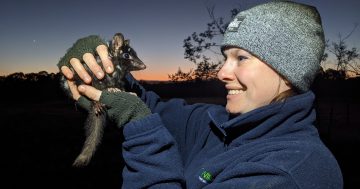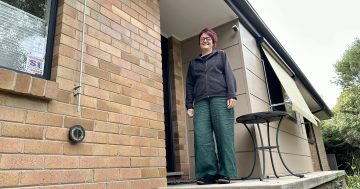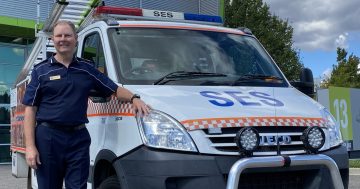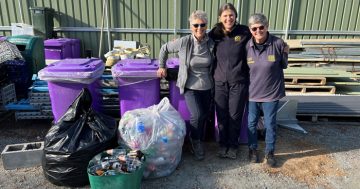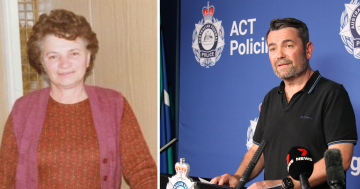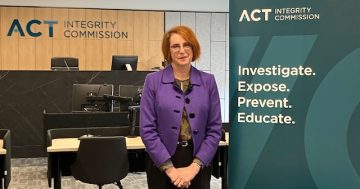
Anke Maria Hoefer from ACT Frogwatch is on the lookout for the croaky creatures. The annual event, in Frogtober, is coordinated by the Ginninderra Catchment Group. Photo: File.
Feeling a little overwhelmed by all those reports of incoming catastrophic weather conditions? A word of advice from one woman who knows frogs. If ever there was a time to listen to ACT Frogwatch co-ordinator Anke Maria Hoefer and the frogs themselves, it’s now.
October is the month when frogs mate, and the males are at their most vocal, making their intentions known to potential partners. It’s through these sounds that we can help gauge the state of the environment, according to Ms Hoefer.
“It can be overwhelming for many of us to constantly hear about one potential catastrophe after another,” she said. “You feel you have no tools to fight these things, but you do. You can make a difference – and it’s such a relief when you feel you can actually do something, even if it’s just a little thing.”
Ms Hoefer co-ordinates the annual community frog-monitoring program the Frogwatch Census, which engages large numbers of volunteers of all ages to undertake frog monitoring and protect frog habitats. This is important and the equation is simple: more frogs equals a better environment. For that, we need data. That’s where Ms Hoefer – and you – come in.
For more than 15 years, Ms Hoefer has been the “one-woman band” with the Ginninderra Catchment Group behind ACT Frogwatch. She trains volunteers to recognise the sounds of the various frog species that live in the ACT and surrounding NSW regions. With more than 200 volunteers on her books covering registered sites across the ACT and NSW from Yass down to Cooma, she collates their findings – like what frog is heard where – which helps map the region’s environmental health.
“We do the frog surveys in October each year because that’s when they’re at their most vocal,” she said. “Otherwise, they’re too hard to find at night.
“The volunteers go out with a buddy, or we have some who go out with people from work or a group of friends together to a designated site.
“We ask them to do a quick air and water temperature check, look at the cloud cover and if there’s wind, then sit down and turn their torch off. We ask for a three-minute recording of the frogs, but they can do it for as long as they want. Some people finish it and are home in 40 minutes; others prefer to make a night of it.”
The youngest Frogwatch volunteer is four; the oldest was well into his 80s. Ms Hoefer said one of her favourite volunteers was an older man who didn’t want to learn the scientific names of the different frogs – “he would just tell me he had heard the ‘squeaky gate frog’, and I knew exactly which one he meant.”
Ms Hoefer said not only did the frog surveys help decision-makers understand the health of our waterways and subsequently plan for the future, but they also provided a valuable experience for the volunteers themselves.
“It’s something they can enjoy together. It crosses the boundaries of language and culture.”
Ms Hoefer, who came to Australia from Germany to study as a biologist, said her favourite part of the job was as the conduit between her volunteers and the people whose work was based on the crucial information collected.
“Citizen scientists like these volunteers can contribute so much,” she said.
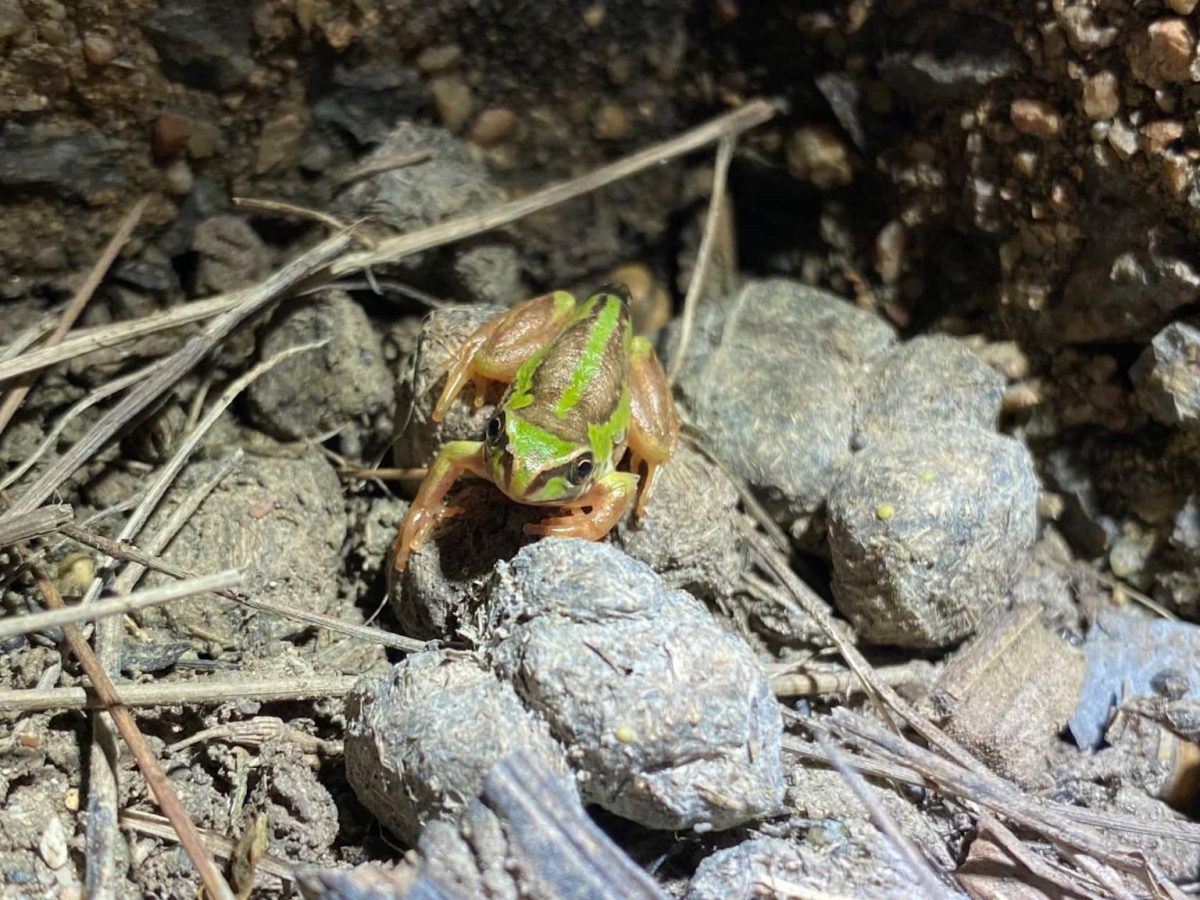
A juvenile tree frog spotted in Canberra’s Orroral Valley during a Frogwatch event. Photo: Anke Maria Hoefer.
“The volunteers are an amazing and diverse group. We have kids who drag their parents in, people in book clubs, work colleagues and even friends who choose to come and watch frogs rather than go out that night. We get people from so many different backgrounds.
“But the one thing this does do is bring people together, and that’s a wonderful thing to see, especially when you consider the wonderful work they’re doing to help their environment.
“Sitting in the dark, quietly, is something everyone can enjoy together. When you’re sitting there at night listening to frogs, nothing else matters.”
More volunteers are needed for the October 2023 Frogwatch. Three training nights have been organised for Tuesday, 26 September, at the Jerrabomberra Wetlands offices, 2 Dairy Road, Fyshwick; Wednesday, 27 September, also at the Jerrabomberra Wetlands offices; and on Friday, 29 September, at Wildbark at Mulligans Flat Woodland Sanctuary, Throsby.
Bookings are now open.











